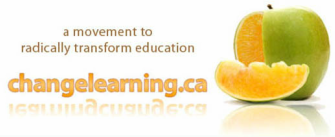|
The latest research and theories from evolutionary psychology, neurobiology and cognitive science demonstrate the various ways that humans have evolved over time to be extremely effective learners. John Abbott discusses what current research from various fields can tell us about how the adolescent brain works and how educators can work with adolescent learners to maximize their potential.
0 Comments
Young children don’t need to be rewarded to learn… the desire to learn is natural. …And as nearly every parent of a preschooler or kindergartner will attest, they play with words and numbers and ideas, asking questions ceaselessly, with as truly intrinsic a motivation as can be imagined. As children progress through elementary school, though, their approach to learning becomes increasingly extrinsic. – Alfie Kohn
Read more We now understand that evolution has provided humans with a powerful toolkit of predispositions that go a long way in explaining our ability to learn language, cooperate in groups, solve problems, plan for the future and empathize with others. This evolutionary inheritance both empowers us and constrains us. We are born ready to learn, but our brains are wired to learn more effectively under certain conditions. Humans learn best when we ‘go with the grain of the brain’ instead of against it.
Imagine schools designed to work in alignment with everything we now know about how kids learn, grow and thrive. Read more Although many people have begun to understand the importance of the [[early years]] to human development, achievement and lifelong success, we have been slow to recognize the elephant in our midst—the adolescent learner. Dropout statistics, plummeting rates of school connectedness, declining academic performance and an increased dislike of school are [[signs of trouble]] underlining a disturbing pattern of disengagement as youth enter their teens. It seems that we may be [[getting it wrong]] for adolescents learners more than anyone in our schools.
Read more Situated learning theory and the cognitive apprenticeship model based on it suggest skills be acquired through authentic contexts and by communicating with peers and experts about those contexts. Brown, Collins, & Duguid, 1989, Researchers
We know that real world interactions and apprenticeship engage maturing youth in learning and help prepare them for adulthood, yet we lecture students "about" abstracted ideas, separated from their daily usefulness. John Abbott, President, 21st Century Learning Initiative
Humans are a striking anomaly in the natural world. While we are similar to other mammals in many ways, our behavior sets us apart. Our unparalleled ability to adapt has allowed us to occupy virtually every habitat on earth using an incredible variety of tools and subsistence techniques. Our societies are larger, more complex, and more cooperative than any other mammal’s. In this stunning exploration of human adaptation, Peter J. Richerson and Robert Boyd argue that only a Darwinian theory of cultural evolution can explain these unique characteristics.
Read more |
Categories
All
Archives
August 2015
|

 RSS Feed
RSS Feed
